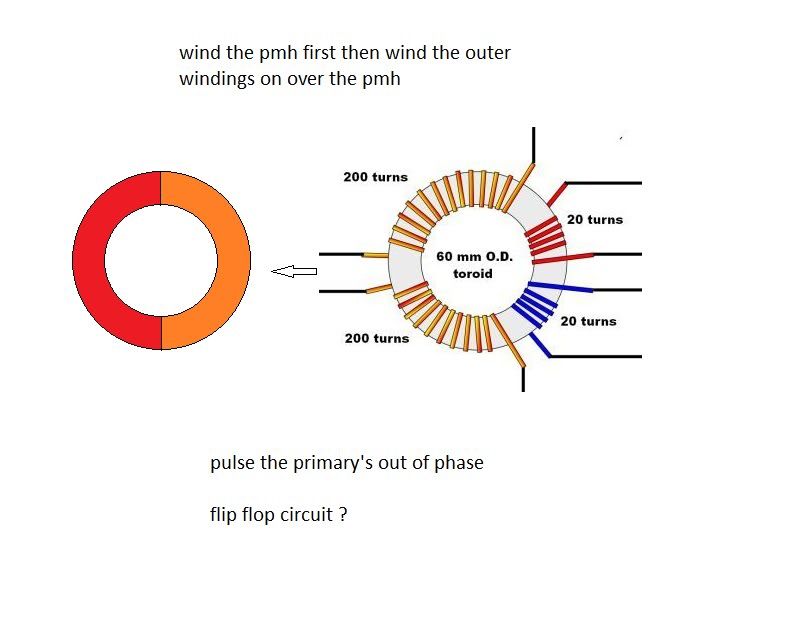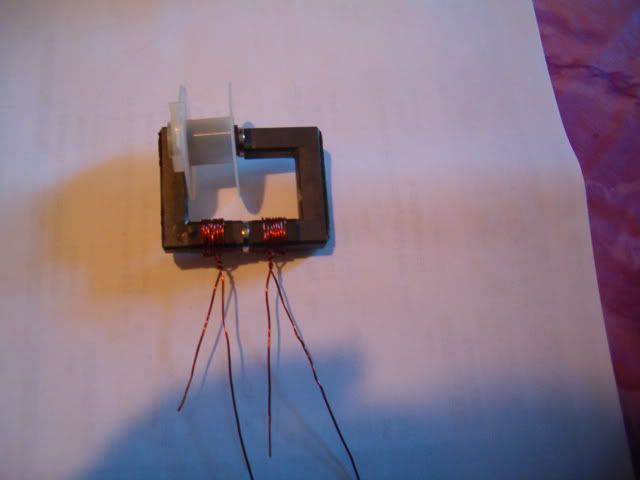lol@Wallace 
Well hey Grommit, it runs !
I connected the winds end/start/end/start etc on each side and then connected up as per the diagram a couple of pages back.
MJE13009L transistor, 1K pot and that's it for now. Will try caps across the pot, the diode to the Base Lasersaber mod and whatever, but it works.
The main thing with this one, is that it uses the wire that comes straight off the CRT neck. Only the 2W LOA LED bulb and the pot haven't come from the monitor.
200mA draw is a bit large and this toroid sings away merrily, but have enjoyed that build.
Here's a short video of it (plus a couple of salts type batteries).
Sorry about the dirtied hands, had just taken the rest of the monitor parts and other gubbins back outside again.
1.5V mains lightbulb + Sea cell seashell battery - YouTube


Well hey Grommit, it runs !
I connected the winds end/start/end/start etc on each side and then connected up as per the diagram a couple of pages back.
MJE13009L transistor, 1K pot and that's it for now. Will try caps across the pot, the diode to the Base Lasersaber mod and whatever, but it works.
The main thing with this one, is that it uses the wire that comes straight off the CRT neck. Only the 2W LOA LED bulb and the pot haven't come from the monitor.
200mA draw is a bit large and this toroid sings away merrily, but have enjoyed that build.
Here's a short video of it (plus a couple of salts type batteries).
Sorry about the dirtied hands, had just taken the rest of the monitor parts and other gubbins back outside again.
1.5V mains lightbulb + Sea cell seashell battery - YouTube


 appears somewhere in the winding and .....finished for today
appears somewhere in the winding and .....finished for today
 :
: 







Comment